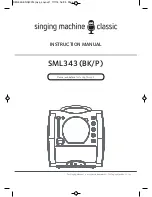
3.9
FUEL SYSTEM
NEVER use gasoline in your HURRICANE heater. The HURRICANE heater is designed to run
on all grades of diesel fuel, furnace oil, stove oil, or kerosene. Do not install the HURRICANE
heater in the same compartment where either gasoline is stored or gasoline equipment operates.
Fuel connections are on the top of the heater and consist of a supply and a bleeder valve located at the
top of the air accumulator. This valve is used to bleed air out of the system after installation or after
running out of fuel. The fuel supply must have a dedicated pickup on the main fuel tank. The pickup
must allow the furnace to run out of fuel prior to the tank being empty.
The
Hurricane Heater
has a built-in fuel pump that is limited to the distance and lift it can handle. If
the fuel line from the fuel tank to the heater is greater than 30 feet and the heater is installed more than
4 feet above the lowest fuel level, a second pump must be installed at the tank to assist in the fuel
delivery. To extend the life of the fuel pumps a minimum 30-micron filter must be installed.
KEEP FUEL LINES
AWAY FROM EXCESS HEAT
1.
Use ¼” (5mm) copper or Coast Guard approved rubber fuel line to connect the fuel supply and
filter to the heater. All fittings must be airtight and the lines purged of all air.
2.
Install a high quality inline fuel filter (part # 6019).
3.
Install an inline shutoff valve to isolate the system for filter service and to
allow shutdown.
4.
Flush the fuel line to rid the system of any foreign material.
5.
Hook up the fuel line to the fuel pump built into the heater. The electrical wires for pump operation
are pre-wired.
3.10
AIR ACCUMULATOR
Air in the fuel line is the single most common cause of heater shutdowns. An Air Accumulator is
installed to prevent air from reaching the burner and shutting it down. It must be regularly
checked and bled when necessary.
A fuel bleed valve is located on top of the heater. You may add a short piece of
hose so you can bleed the air into a bleed reservoir by opening the valve. Close the
valve after the air is bled from the fuel line. Do not run the heater with the bleeder
valve open. Constant bleeding is a sign of air leaks between the fuel tank and the
heater.
Summary of Contents for CO105D
Page 14: ...Figure 2 1 Component Parts CO Model See Chapter 8 for complete Parts Listing...
Page 15: ...Figure 2 2 Typical Installation...
Page 51: ...FIGURE 8 1 HEATER ASSEMBLY...
Page 52: ...FIGURE 8 2 COMPONENT BOX ASSEMBLY...
Page 53: ...FIGURE 8 3 WATER JACKET AND BURNER BOX ASSEMBLY...
















































